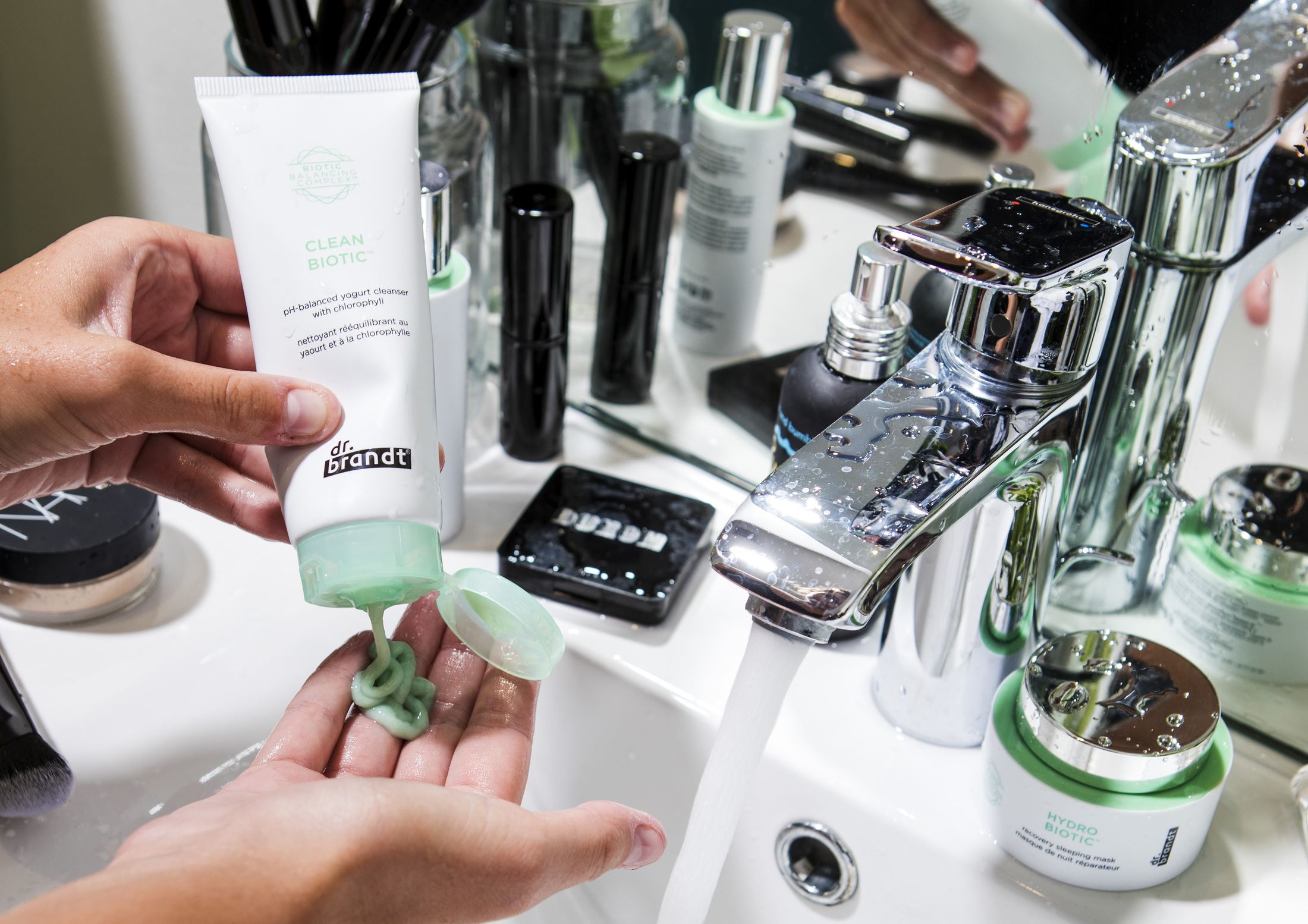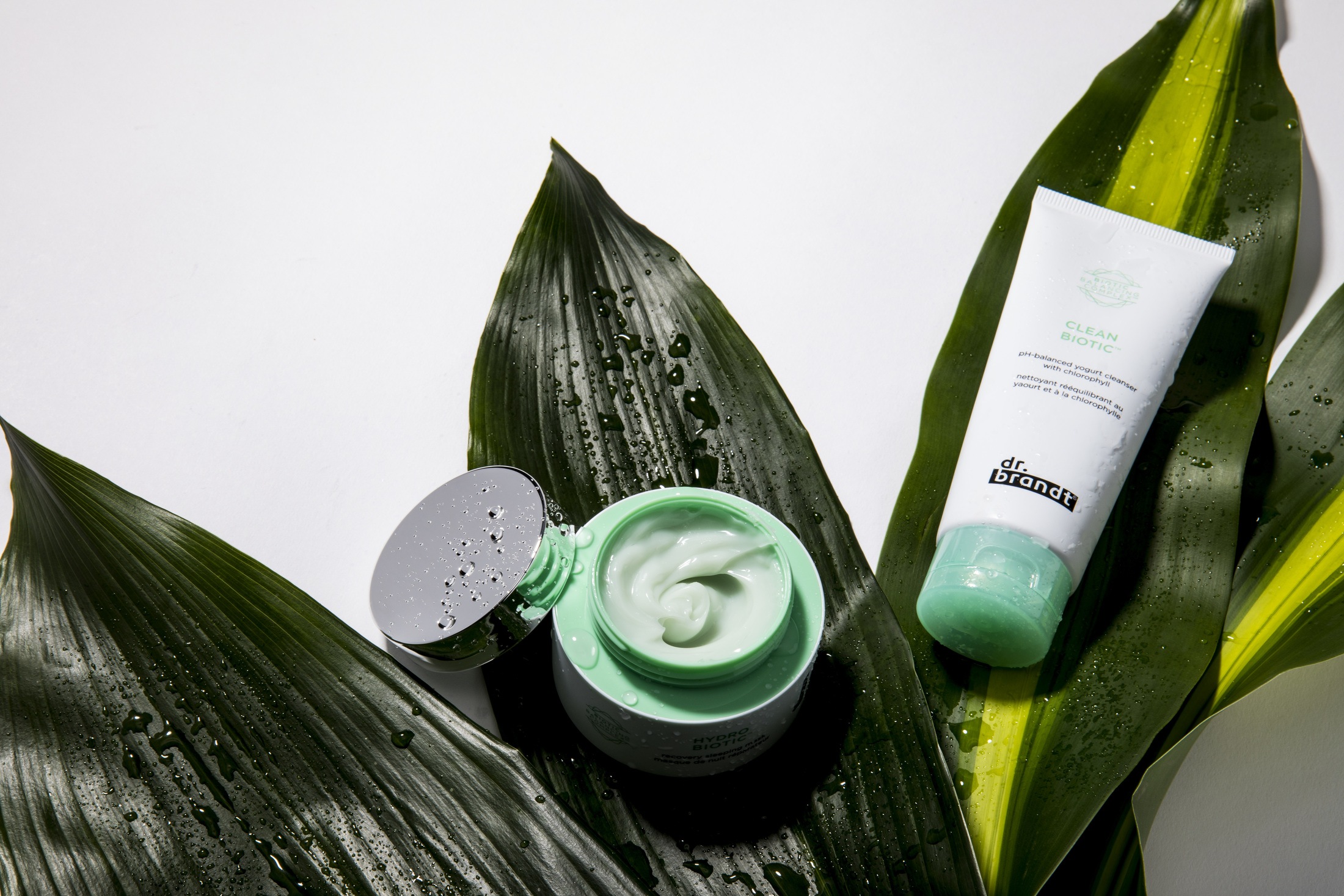Make Room, Probiotics: Why You Should Be Using Prebiotics in Your Skin-Care Routine
The term probiotic has been tossed around in association with regulating your digestive system, but prebiotics are a super important part of the equation, too—and they want in on your skin care.
"Just like the bacteria in our gut, we have bacteria on our skin (our largest organ)," Amy Shapiro, RD and founder of Real Nutrition says. "We want more good than bad bacteria and want to keep this environment healthy to prevent inflammation, excessive dryness or oiliness, flair ups, and premature aging. Prebiotics [fibrous foods] help to feed the probiotics." Makes so much sense, right?
Dr. Brandt—a skin-care brand that brings in-office cosmetic vibes to your everyday at-home products—is putting prebiotics at the forefront in its Biotics line, and recently added Clean Biotic to the bacteria-friendly lineup.
"Every product of the Biotics line contains our exclusive Biotic Balancing Complex," says Amandine Morel, product development director at Dr. Brandt. "This complex helps to restore microbiological balance of the skin in favor of 'friendly' microorganisms naturally present on the epidermis." AKA glowy, dewy skin awaits you.
Scroll down to learn why you should add prebiotics to your skin-care cabinet—and how they help give you a natural summer glow.

Got pH?
The key takeaway from infusing prebiotics into your skin care is ensuring that your skin's pH isn't out of whack—which then leads to a slew of unwanted skin issues. "I think people are focused on fixing the problems rather than preventing them from happening in the first place," says Molly Knauer, RD for Dr. Brandt. "pH-balanced skin is the key to preventing breakouts and irritation." Looking at you, chin zits!
When your skin's acidity is a little off, it causes the natural barrier (that your skin already uses to fight off toxins and pollution) to break down, and guess what happens when your skin's knight in shining armor decides to leave early for the day? Your skin could break out, fine lines could come through, and then you're left to rebuild the foundation.
When your skin's acidity is a little off, it causes the natural barrier (that your skin already uses to fight off toxins and pollution) to break down."
If you aren't sure where your pH should be, we got some insight. "The acid mantle is the skin’s way to protect itself from bacteria, environmental pollutants, and moisture loss for example," says Knauer. "This acid mantle is characterized by having a pH of 5.5, slightly acidic, which is the physiological condition of healthy skin." So, keeping your pH at this sweet spot will protect you from skin issues like dermatitis, eczema, acne, and rosacea from either being too acidic or too alkaline.
Dr. Brandt's Biotic line helps balance harmful bacteria by supporting the good bacteria, which allows those friendly microorganisms to do their thing.

Inside the Biotics
The newest addition to the Biotics fam is Clean Biotic, which is a pH-balanced cleanser with chlorophyll, which contains an abundance of antioxidants that keep your skin looking fresh. Sooo, why haven't we been using prebiotics in our skin care until now?
Bright Biotic, which is a lightweight serum, uses an antioxidant blend and fruit enzymes to help reduce the look of dark spots and brighten up your epidermis. And with the help of our trusty prebiotics, it helps balance the skin's natural flora and pH.
The other superstar in the Biotic family is the Hydro Biotic. This recovery mask moisturizes overnight to reduce any irritation or redness—and of course infuses prebiotics to help in your quest to balance out your skin's pH.
In partnership with Dr. Brandt
Photos: Dr. Brandt
Loading More Posts...